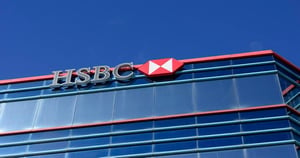BP p.l.c. (BP.L), a stalwart of the energy sector, continues to capture investor attention as it navigates the evolving landscape of the oil and gas industry. With a rich history dating back to 1908, this London-based integrated energy company operates across various segments, including Gas & Low Carbon Energy, Oil Production & Operations, and Customers & Products. As BP strives to balance traditional energy practices with the demands of a low-carbon future, investors are keenly observing its financial performance and strategic direction.
Currently trading at 359.75 GBp, BP’s stock price reflects a level of stability amidst the volatile energy market. Over the past year, the company’s share price has seen a range between 331.70 GBp and 490.30 GBp, indicating significant fluctuations influenced by global oil prices and market sentiment. Despite a negligible price change recently, the stock’s potential upside of 19.26% based on analyst average target prices suggests room for growth.
However, BP’s valuation metrics present a mixed picture. The absence of a trailing P/E ratio and a notably high forward P/E of 698.38 raise questions about earnings expectations and market valuation. While these figures might deter some investors, it’s essential to consider the broader context of BP’s operational performance and industry challenges.
Revenue growth stands at -4.10%, highlighting the pressures BP faces in increasing its top line amidst fluctuating oil prices and transitioning energy demands. The company’s EPS of -0.05 and a return on equity of -0.24% further underscore the profitability challenges it currently encounters. Nonetheless, BP’s substantial free cash flow of over $11.5 billion provides a cushion to support its operations and strategic initiatives, including investments in renewable energy and carbon capture technologies.
Dividend-seeking investors may be attracted to BP’s robust dividend yield of 6.82%, though the extraordinarily high payout ratio of 1,316.37% suggests that the dividend may not be sustainable in the long term without improved earnings. As BP continues its journey towards a more sustainable energy model, the balance between rewarding shareholders and reinvesting in future growth will be crucial.
Analyst sentiment towards BP reveals a cautious optimism, with 5 buy ratings and 13 hold ratings, alongside a single sell recommendation. The target price range for BP’s stock spans from 335.30 GBp to 650.28 GBp, reinforcing the notion of both potential downside and upside, depending on BP’s ability to execute its strategic plans effectively.
Technical indicators provide additional insight into BP’s current market position. The stock’s 50-day moving average of 378.90 GBp and 200-day moving average of 402.28 GBp suggest a downward trend, while the RSI of 40.73 indicates that the stock is approaching oversold territory. These technical signals may intrigue investors looking for entry points based on price momentum and market trends.
In the broader context, BP’s extensive involvement in producing and trading both renewable and non-renewable energy positions it uniquely among its peers. As the company continues to expand its renewable energy portfolio, including solar, wind, and hydrogen, BP is poised to play a pivotal role in the global energy transition.
Investors considering BP should weigh the company’s commitment to sustainable energy against the immediate challenges of profitability and market volatility. As the energy landscape continues to evolve, BP’s adaptability and strategic foresight will be critical in shaping its future, offering both risks and opportunities for those invested in its journey.


































